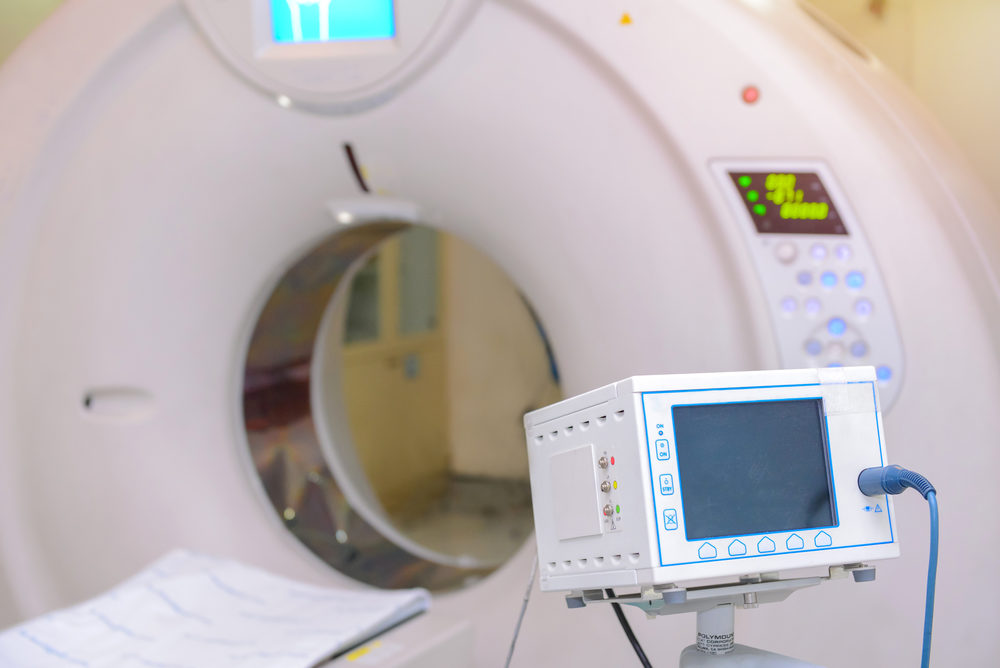Study Finds Spheres Of Gadolinium In Brains After MRI Contrast Agent Injections Given to Rats

New research appears to add to the growing body of evidence that gadolinium used in MRI contrast agents can build up in the body, specifically the brain.
Although manufacturers of the MRI contrast agents have indicated that individuals with normal functioning kidneys safely remove the gadolinium from their body shortly after an exam, thousands of individuals nationwide have reported experiencing painful and debilitating complications that persist for years, including bone and joint pain, skin discoloration or thickening, persistent headaches, nerve damage and other problems.
In recent years, a number of studies have shown that deposits of the toxic metal used to enhance MRI scans may remain in the body, potentially resulting in these symptoms. As a result, some in the medical community have started to recognize a new medication condition, known as gadolinium deposition disease.

Did You Know?
AT&T Data Breach Impacts Millions of Customers
More than 73 million customers of AT&T may have had their names, addresses, phone numbers, Social Security numbers and other information released on the dark web due to a massive AT&T data breach. Lawsuits are being pursued to obtain financial compensation.
In a study published last week in the medical journal Investigative Radiology, French and German researchers indicate that spheroid gadolinium (Gd) deposits, which looked like sea urchins in the cerebellum, are commonly discovered among rats who were injected with gadolinium-based contrast agents (GBCAs).
Researchers gave rats with kidney impairments 20 daily intravenous injections of various forms of commercial gadolinium for five weeks. Some rats, used as controls, were injected with saline instead. One month after the last injection, the researchers conducted an electron microscope study of the deep cerebellum and the choroid plexus.
According to the findings, researchers found structures of gadolinium in rats specifically injected with the MRI contrast agents Omniscan (gadodiamide) and MultiHance (gadobenate), but not with the contrast agent Dotarem (gadoterate). The study found that in most cases, the deposits took on a characteristic spheroid shape like that of a sea urchin, which were rich in phosphorus.
“Transmission electron microscopy analysis of cerebellums of renally impaired rats repeatedly injected with gadobenate and gadodiamide revealed the presence of Gd,” the researchers reported. “Spheroid Gd depositions consisting of a filamentous meshwork were observed in the wall of microvessels, in perivascular Virchow-Robin space, and in the interstitium. Gd was also found in choroid plexus and was associated with pigments (likely lipofuscin) in glial cells.”
Concerns emerged about the safety of MRI gadolinium contrast agents first emerged about a decade ago, when they were linked to the development of nephrogenic systemic fibrosis (NSF), a rare and life-threatening condition which was found to occur among patients with impaired kidney function, causing their skin to thicken and harden, severely restricting movement.
Sometimes referred to as gadolinium associated systemic fibrosis, NSF is a painful disorder that has no known cure and often results in confinement to a wheelchair and then death.
In 2007, the FDA limited gadolinium contrast doses in most kidney patients and contraindicated it for others, which limited the risk of NSF. In September 2010, the FDA went even further and banned the use of Bayer’s Magnevist on patients with kidney problems, due to the heightened risk of NSF.
The agency also required label changes for all gadolinium agents, warning healthcare professionals to screen patients before injecting gadolinium to identify those suffering from acute kidney injury or chronic, severe kidney disease.
However, manufacturers of the MRI contrast dye now face a new batch of gadolinium deposition disease lawsuits being pursued by individuals without any kidney problems, who developed severe and debilitating health problems they claim are linked to retention of gadolinium in the brain and body.
In September 2017, the FDA’s Medical Imaging Drugs Advisory Committee voted to recommend the FDA require new MRI contrast agent warnings about the risk of gadolinium build up in the brain. However, in May the FDA concluded that gadolinium in the brain appeared to carry no threat of health effects.
In December 2017, the FDA issued a drug safety communication for gadolinium-based contrast agents, including Omniscan, OptiMark, Magnevist, Gadavist and others, providing new information about the risk of gadolinium retention and potential side effects.
The FDA recommended that health care professionals consider the fact that the body retains gadolinium when deciding whether to give it to patients that may be at higher risk of health problems. These include women who are pregnant or think they may be pregnant, patients with kidney problems, children, and patients when inflammatory conditions. The recommendations also suggest that repeated use of the contrast agents be minimized where possible, particularly when MRIs are scheduled closely together.






0 Comments